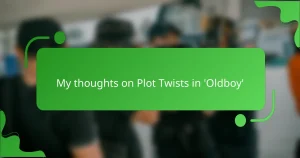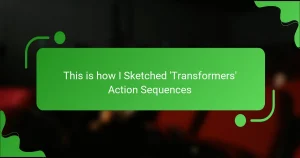Key takeaways
- Action short films effectively utilize concise storytelling, combining intense character development with elevated stakes to engage audiences swiftly.
- The ‘Save the Cat!’ concept helps create relatable heroes through early acts of kindness, fostering emotional connections that enhance viewer investment.
- Dynamic pacing and strong central conflicts are crucial to maintaining audience engagement and revealing characters’ motivations throughout the film.
- Incorporating feedback and focusing on character arcs can deepen emotional resonance, balancing action with meaningful storytelling elements.
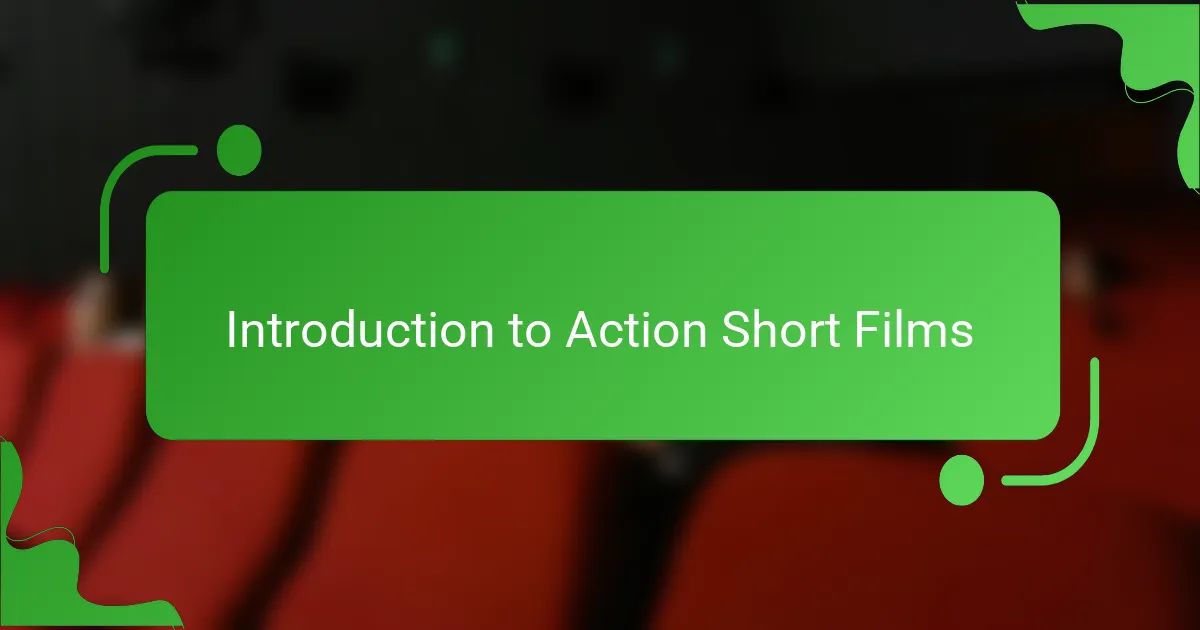
Introduction to Action Short Films
Action short films are a dynamic and thrilling part of the cinematic landscape, often packing explosive moments into a brief runtime. I recall my first encounter with an action short; it was captivating how the filmmakers conveyed a high-stakes narrative in just a few minutes. The adrenaline rush was palpable, reminding me that effective storytelling doesn’t always require lengthy scripts—sometimes, the essence is captured in quick, impactful scenes.
In my experience, action short films often excel in showcasing characters’ growth through intense moments. Here’s a quick list of elements that frequently elevate these films:
- Elevated Stakes: Characters are often thrust into dire situations, which creates immediate tension.
- Visually Stunning Action: High-quality cinematography and choreography bring adrenaline-pumping scenes to life.
- Concise Storytelling: Every second counts, and plot points are delivered with brevity and precision.
- Character Development: You usually see a transformation or revelation, making moments resonate emotionally.
- Engaging Sound Design: A gripping score and impactful sound effects add layers to the overall experience.
These elements combine to create a powerful and memorable experience, encapsulating everything I love about this genre.
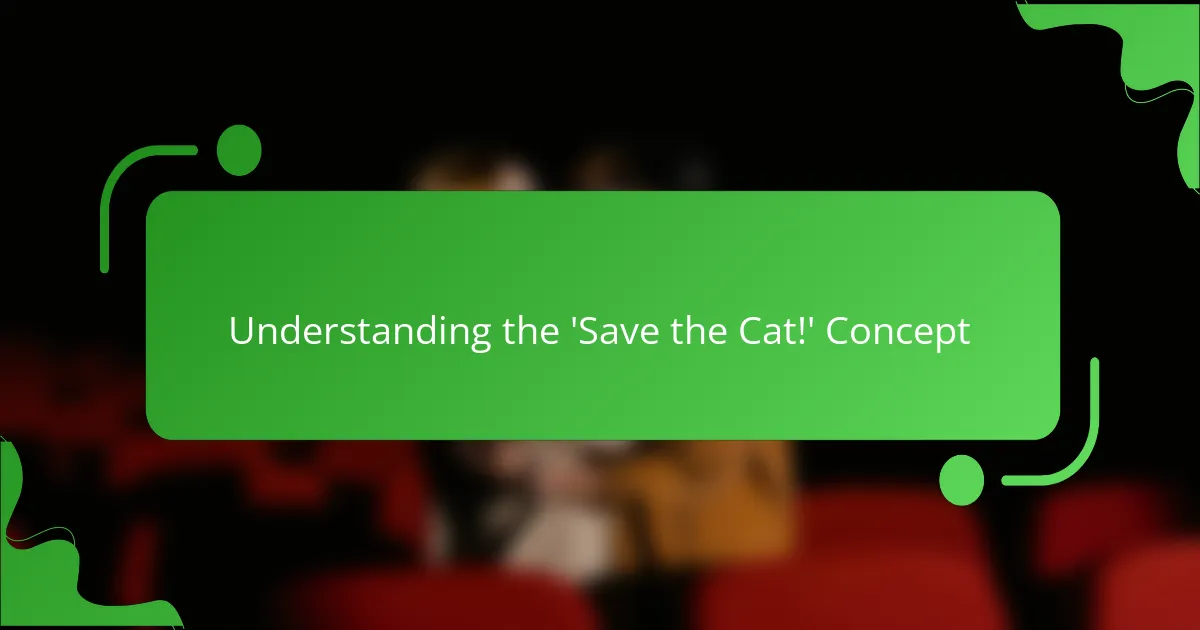
Understanding the ‘Save the Cat!’ Concept
Understanding the ‘Save the Cat!’ concept is pivotal for any filmmaker, especially in action shorts where time is limited. The premise revolves around creating a likable protagonist who performs an act of kindness early in the story—essentially “saving the cat.” I remember watching a short where the hero stopped to help a stranded motorist before diving into the chaos; it instantly made me root for him.
This technique serves to build an emotional connection between the audience and the character, which is vital in those brief moments of storytelling. In my experience, having that moment of compassion in an action-packed film transforms the character from a mere action hero into someone we can truly care about. How can an audience invest in the stakes if they don’t feel for the hero first?
Moreover, the ‘Save the Cat!’ moment becomes a narrative anchor that shapes the audience’s expectations. It provides a glimpse into the hero’s moral compass and lays the groundwork for subsequent conflicts. I’ve seen films where that one moment of kindness made the character’s eventual struggles and triumphs all the more compelling, showing just how critical this concept is in a tight narrative landscape.
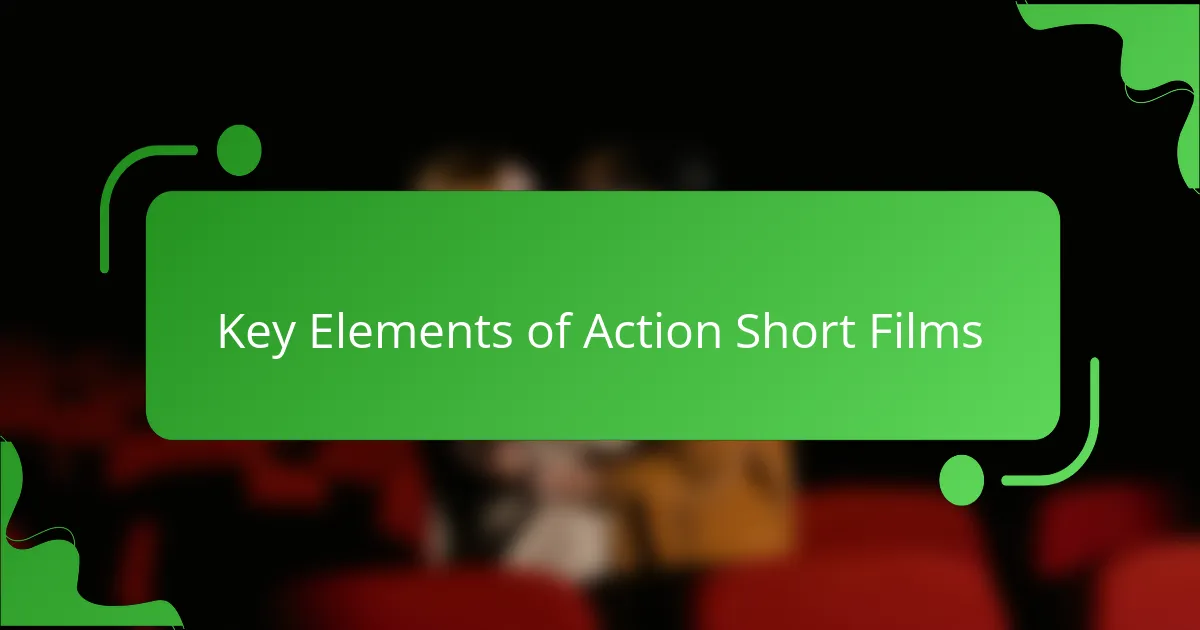
Key Elements of Action Short Films
When it comes to action short films, I’ve found that certain key elements consistently capture the audience’s attention and drive the narrative forward. First and foremost, the establishing of a central conflict is crucial. Conflicts can stem from intense personal struggles or external threats, and they propel the characters into action, often revealing their core motivations. For example, I recall watching a short where the main character was driven by the need to save a loved one, which instantly made me root for them.
Another vital aspect is dynamic pacing. In the realm of action, maintaining a brisk pace keeps viewers engaged. I remember feeling my heart race during a particularly suspenseful sequence where each moment felt like a cliffhanger—perfectly timed cuts and rapid editing made that short unforgettable. Additionally, well-crafted character arcs can elevate a simple premise. A protagonist’s growth or realization—not just their skills—can add layers to the story. One short that really stuck with me depicted a once-cowardly character facing their fears head-on, which brought an emotional depth I didn’t expect from a piece labeled simply as “action.”
| Key Element | Description |
|---|---|
| Central Conflict | The driving force that propels the narrative and reveals character motivations. |
| Pacing | Dynamic rhythm that maintains audience engagement and sustains tension throughout the film. |
| Character Arcs | Character development that adds depth and emotional resonance, enhancing the action elements. |

Applying ‘Save the Cat!’ in Action
Applying the ‘Save the Cat!’ technique in action films often shapes how audiences connect with characters amid chaos. I vividly remember a short where the protagonist paused to help a child in danger before facing overwhelming odds. That moment transformed my perception of him; suddenly, he wasn’t just performing daring feats. He became someone I genuinely cared about, which intensified my investment in his journey. How powerful is it to see a hero choose compassion in a world filled with action?
Incorporating a ‘Save the Cat!’ moment also sets the stage for deeper emotional stakes. I once watched a film where an unassuming hero showed kindness to a rival, only to face their betrayal later. That initial act highlighted the themes of trust and betrayal, making every subsequent conflict much more impactful. It’s fascinating to ponder: how does one small act shape our understanding of a character’s motives?
Practicality matters too. Filmmakers in action shorts have limited time to craft these pivotal moments. I’ve noticed that the most effective use of ‘Save the Cat!’ often coincides with tight storytelling. When executed well, it contributes to a layered narrative that resonates long after the credits roll. Reflecting back, I appreciate how these elements intertwine—making every second on screen count, ultimately striving for both thrilling action and meaningful connections.

My Personal Journey with ‘Save the Cat!’
My journey with “Save the Cat!” started when I was venturing into writing action short films. The structure resonated with me right away, especially the “Save the Cat” moment, where the hero does something endearing. I remember when I was drafting my first script, I struggled to find a way to make my main character relatable. Then, I added a scene where he rescues a stray dog. It not only highlighted his heroic qualities but also brought a depth of character that audiences could connect with emotionally.
Applying “Save the Cat!” tactics has transformed my approach to storytelling. I’ve realized that action films, packed with thrills, still need that human touch to be memorable. The emotional stakes elevate the tension even in high-octane sequences.
- I used the idea of a “monster” in my film, creating tension not only through action but also emotional conflict.
- Every time I introduce a pivotal plot point, I ensure it adheres to the “Save the Cat!” beats, keeping audiences engaged.
- The journey of my characters now includes small, relatable moments that create a bond with viewers.
- Discovering the balance between action and emotion has not only enhanced my storytelling skills but also deepened my appreciation for films that embody this principle.
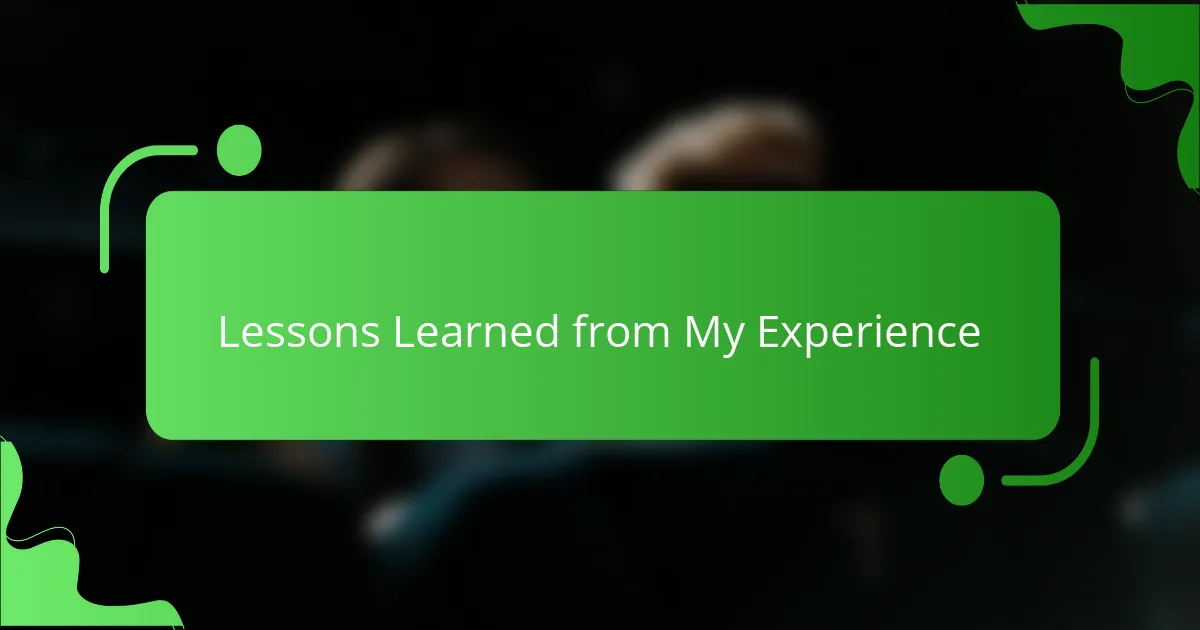
Lessons Learned from My Experience
When I delved into the structure of “Save the Cat!” for action short films, it became clear just how pivotal these beats are in shaping a compelling narrative. I remember crafting a scene that hinged on the “Save the Cat” moment—where the protagonist does something heroic at the onset—only to discover how it resonated with audiences. It wasn’t just a writing technique; it became a tool for deepening viewer engagement, making them root for my character from the get-go.
Through experimentation and incorporating feedback, I learned to cherish the other beats in the framework as well. For instance, ensuring that each character had clear goals and motivations helped me relate to their struggles—facing their fears, battling unknown foes, and ultimately evolving over the course of the film. This not only made for an action-packed story but also a profound emotional journey.
Lessons Learned:
- Establish a strong opening moment that endears your hero to the audience.
- Maintain clear motivations for your characters to enhance relatability.
- Embrace feedback to refine the structure and elevate emotional stakes.
- Use each beat to build tension and pacing within the action sequences.
- Remember that every action scene should serve the character’s development, not just the excitement of the moment.
